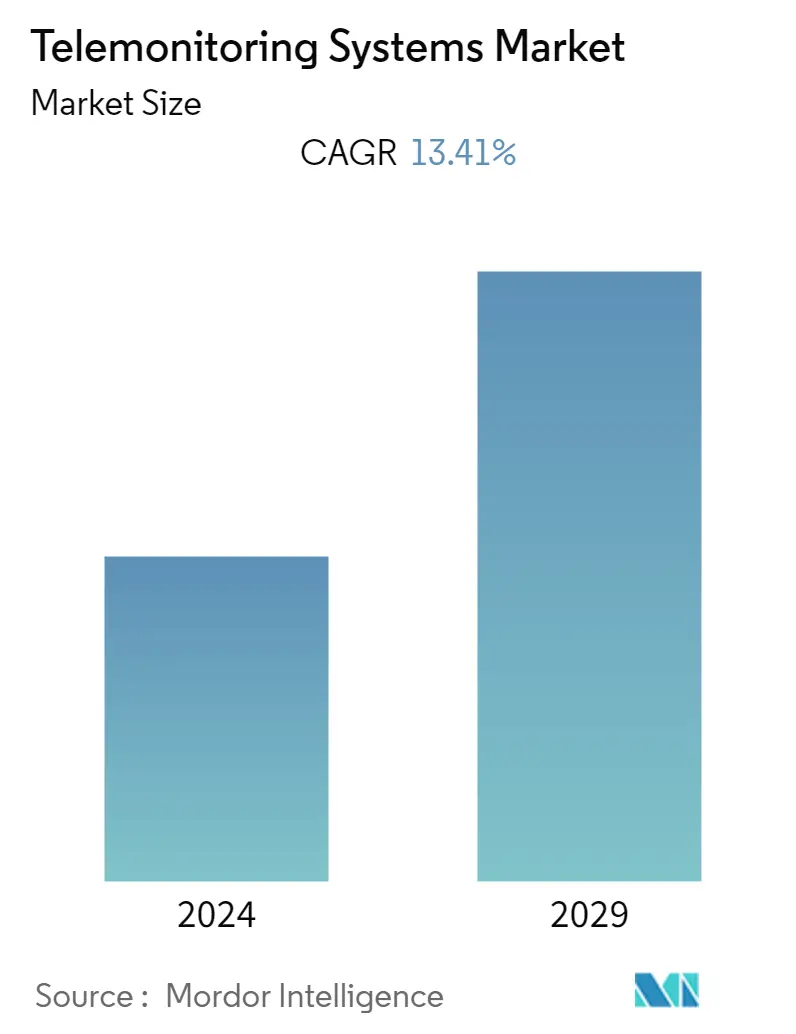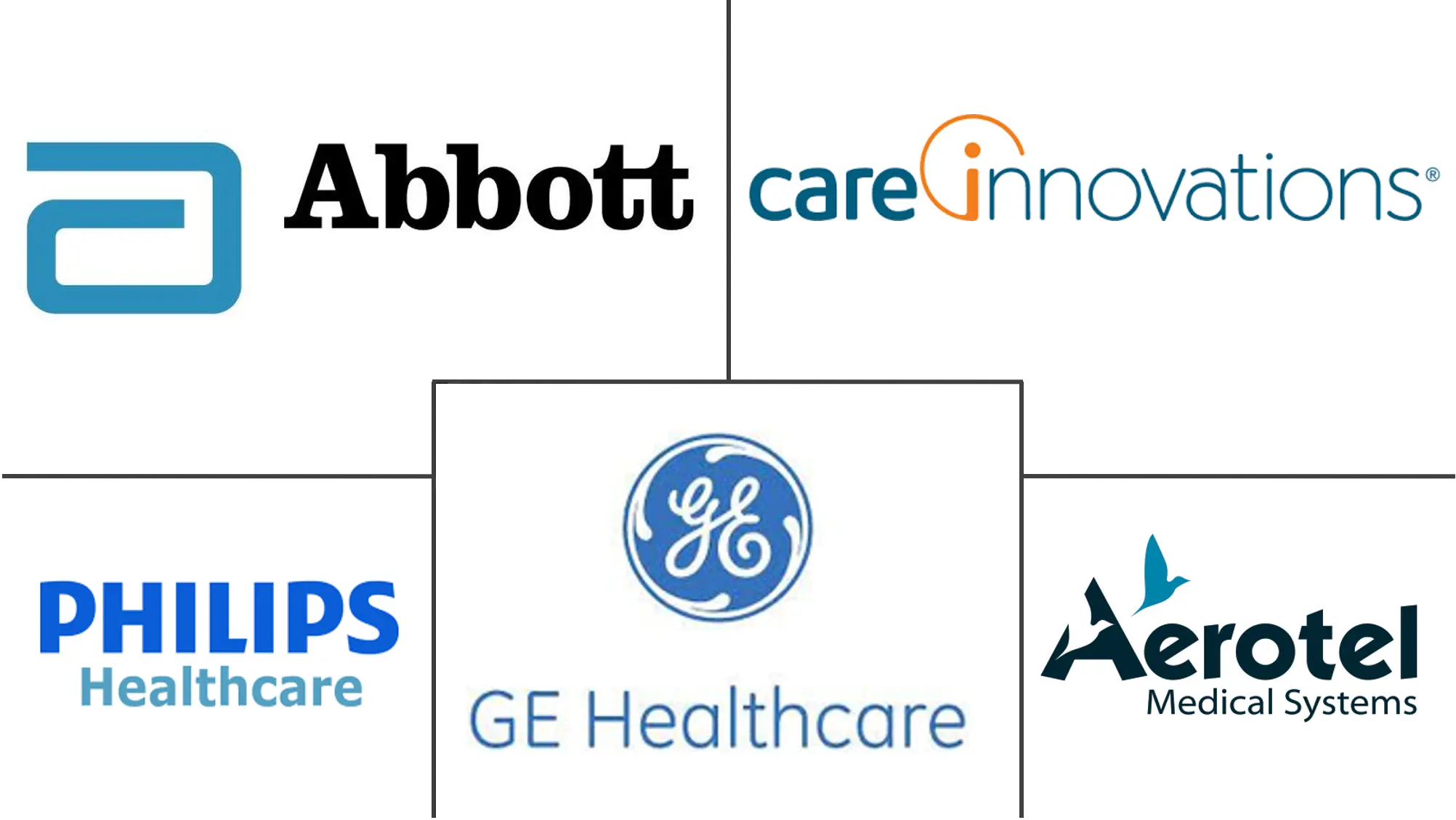Market Size of Telemonitoring Systems Industry

| Study Period | 2019 - 2029 |
| Base Year For Estimation | 2023 |
| CAGR | 13.41 % |
| Fastest Growing Market | Asia Pacific |
| Largest Market | North America |
| Market Concentration | Low |
Major Players
*Disclaimer: Major Players sorted in no particular order |
Need a report that reflects how COVID-19 has impacted this market and its growth?
Telemonitoring Systems Market Analysis
The telemonitoring systems market was evaluated at USD 2,450.2 million in 2020, and it is expected to reach a value of USD 5,305.8 million by 2026, registering a CAGR of 13.41% over the forecast period, 2021 - 2026. As telemonitoring refers to the process that comprises transmission of symptom scores, physiological patient data, such as the heart rate, oxygen saturation, blood pressure, and others, the usage of IoT is significantly driving the new trend in the studied market. Devices, like IoT-enabled medical wearable temperature sensors to transmit data to a central monitoring system remotely, are already being implemented in regions, such as North America. Medical staff is alerted based on trends and thresholds, identifying the patient and room, and can respond accordingly. Further, in countries such as in Europe, it is predicted that the use of IoT in the region may increase almost three-fold between 2017 and 2025, reaching 4.9 billion connected devices, increasing the integration of telemonitoring systems significantly.
- Increasing chronic diseases and the growing aging population is driving the market. The global population is aging at a rapid pace, owing to various government initiatives to enhance the longevity revolution. Most developed nations are increasingly observing growth in the number of the aging population. According to the UN data, in 2019, there were 703 million people aged 65 or older, and the number is projected to reach 1.5 billion by 2050. The world is observing a significant increase in the number of chronic diseases, especially in terms of hypertension, diabetes, and respiratory problems. According to IDF, in 2019, 463 million adults were living with diabetes, and by 2045, this is expected to increase to 700 million. Furthermore, 1 in 5 of the people that are above 65 years are suffering from diabetes.
- Rising healthcare expenditure is driving the market. The global Medicaid expenditure increased significantly over the years. According to CMS, the global Medicaid expenditure in 2019 was valued at USD 639.4 billion, which was USD 616 billion during the previous year. Further, a significant share of global healthcare spending is directed toward the purchase of equipment. For instance, in 2019, the UK's consumer spending on medical products, appliances, and equipment was valued at GBP 16,685 million, according to the Office for National Statistics (UK). Such developments are expected to influence the demand for telemonitoring.
- Further, the healthcare expenditure to treat diabetes in the United States during 2019 was valued at USD 294.6 billion, and in China, it was valued at USD 109 billion, according to the International Diabetes Federation. Such growth is expected to further augment the demand for monitoring devices by patients undergoing the treatment.
- Furthermore, the impact of COVID-19 has been evident with the sudden spurt in demand as the investment in healthcare infrastructure has experienced a sudden increase to improve health services. The demand for telemonitoring system is expected to spearhead over the coming years due to the outbreak of COVID-19. As the government across the world has announced to reduce non-emergency visits to the hospitals and postpone surgeries, in-case they are not on an emergency, so it influences both patients and healthcare professionals to adopt remote monitoring systems.
- Telemonitoring solution vendors are increasingly working with the government and healthcare industry to encourage the use of such systems. For example, Phillips is enabling hospitals in the Netherlands to remotely screen and monitor patients with COVID-19.
